All Departments
- Aortic valve stenosis (Aortic stenosis)
- arteriovenous malformations
- Avascular Necrosis
- Best cosmetic dentistry in Iran| Dental Treatment in Iran
- Breast Augmentation in Iran|Breast implant in iran
- Breast Reduction surgery
- Cancer in Iran: oncology in Iran
- Cardiology
- Cataract surgery in Iran
- Cochlear Implant Surgery in Iran
- Cosmetic Laser
- Cosmetic Surgery
- Ear cosmetic surgery
- Eye Care
- Eyelid surgery (Blepharoplasty)
- General Heart Surgery in Iran
- General surgery in Iran
- Glaucoma Treatment In Iran
- Hair Transplant
- Heart valve surgery
- lasik Eye Surgery
- Liposuction
- Non-Surgical Cosmetic procedures in iran
- Organ Transplantation in Iran
- Orthopedic
- Paget disease of bone
- Pediatrics
- Plastic surgery
- Psychiatry
- Radiology
- Rhinoplasty surgery in iran
- Shoulder Replacement Surgery
- SkinCare Treatment
- Spinal cord injury
- urolithiasis procedure in iran
- Urology
- Varicocelectomy
Opening Hours

Ear cosmetic surgery

Breast augmentation
Breast augmentation is a surgical procedure to improve the size and shape of a woman’s breast. This is done by inserting full plants…

Revision weight loss surgery
Revision weight loss surgery, also known as bariatric revision surgery, is a type of surgical procedure that is performed on patients who have previously undergone weight loss surgery
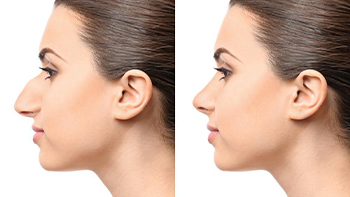
Rhinoplasty revision
Revised rhinoplasty, also known as secondary rhinoplasty, is a surgical procedure performed…

Rhinoplasty in Iran
Nasal plastic surgery, also known as “nose job”, is a surgical procedure that involves changing the shape or size of the nose.

Liposuction
Liposuction is a surgical procedure aimed at removing unwanted fat from certain areas of the body, such as the abdomen and buttocks.

Ear surgery
Ear surgery, also known as ear surgery, is a cosmetic surgery procedure determined to improve the appearance of the ears.

Brazilian butt lift (BBL)
Brazilian butt lift (BBL) is a cosmetic surgery procedure that involves the transfer of fat from one area of the body, such as the abdomen.

Breast removal
Breast lift, also known as breast fixation, is a surgical procedure to remove and reshape the sagging breast.

Beautification of the lips
Labiaplasty is a surgical procedure that involves reducing the size and/or changing the shape of the labia minora.

Skin care
Skin care includes cleansing and exfoliation and the use of creams and medical products…
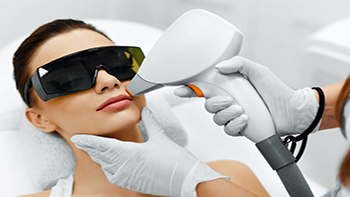
Laser beauty
Employing laser to treat wrinkles, fine lines, scars, acne, pimples, moles, freckles, and unnatural growth of hair…

Tummy tuck
Tummy tuck, also known as tummy tuck, is a cosmetic surgery procedure determined to improve the appearance of the abdomen by removing…

Hair transplantation in Iran
Hair transplantation is a surgical procedure that involves the transplantation of hair follicles, which are a part of the body, and usually it is the back part of the head.
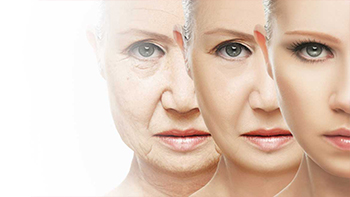
plastic surgery
Reconstructive surgery is performed to correct physical deformities caused by accidents, birth defects, or medical conditions.

Composite veneer
Composite veneer is a type of dental veneer made from composite resin material. The theme of use…

Dental implants
A dental implant is a surgical component placed in the jaw bone to support a dental replacement, such as a crown, bridge, or denture.
Ear cosmetic surgery
Otoplasty surgery in Iran (ear surgery)
ear plastic surgery
Otoplasty surgery, also known as ear surgery, is a popular cosmetic procedure in Iran. Renowned for its skilled surgeons and affordable prices, Iran attracts many international patients seeking ear correction and reshaping. With state-of-the-art facilities and a high standard of care, Iran offers a favorable destination for individuals considering otoplasty surgery.
Otoplasty in Iran: All you need to know
Otoplasty, commonly referred to as ear surgery, is a procedure aimed at reshaping and correcting the appearance of the ears. In Iran, otoplasty is a well-established and sought-after surgical procedure. The country is renowned for its highly skilled plastic surgeons who specialize in ear surgery and have extensive experience in this field.
Iranian clinics and hospitals are equipped with modern facilities and adhere to international standards of safety and hygiene. The cost of otoplasty in Iran is often more affordable compared to many other countries, making it an attractive option for individuals seeking ear correction.
It is important to consult with a qualified surgeon in Iran to discuss your specific goals and expectations. They will evaluate your case, provide personalized recommendations, and guide you through the entire otoplasty process, ensuring optimal results and patient satisfaction.

What is otoplasty surgery?
cosmetic surgery for ear
what does it fix?
Otoplasty surgery, also known as ear surgery or ear reshaping surgery, is a cosmetic procedure performed to alter the size, shape, or position of the ears. It is typically done to correct various aesthetic concerns or functional issues related to the ears.
Otoplasty can fix several common ear problems, including:
– Prominent ears: This refers to ears that stick out more than desired. Otoplasty can reshape the cartilage and reposition the ears closer to the head, creating a more balanced and natural appearance.
– Overly large ears: Otoplasty can reduce the size of ears that are disproportionately large in relation to the face.
– Ear asymmetry: If there is a noticeable difference in size or shape between the two ears, otoplasty can help achieve better symmetry.
– Lop ear or cupped ear: These conditions involve an abnormal folding or curvature of the ear cartilage. Otoplasty can correct the shape and contour of the ears to achieve a more typical appearance.
– Earlobe repair: Otoplasty can also address torn, stretched, or damaged earlobes, either from trauma or from wearing heavy earrings.
Otoplasty surgery is tailored to the individual’s specific needs and goals, aiming to enhance the appearance of the ears and improve overall facial harmony.

who Can Benefit From Ear Surgery (Otoplasty)?
otoplasty surgery
Ear surgery, or otoplasty, can benefit individuals of various age groups who have specific concerns or conditions related to their ears. The following groups of people may benefit from otoplasty:
- Children with prominent ears: Otoplasty can be performed on children as young as five or six years old, once their ears have reached near-full development. It can address prominent or protruding ears, helping to improve their self-esteem and prevent potential social difficulties.
- Teenagers and adults with aesthetic concerns: Individuals who are unhappy with the size, shape, or symmetry of their ears can consider otoplasty. This includes those with overly large ears, misshapen ears, ear asymmetry, or ear deformities resulting from birth defects or injuries.
- Individuals with earlobe issues: Otoplasty can be beneficial for those with torn, stretched, or damaged earlobes, which may result from trauma, piercings, or gauging.
It is important to note that candidates for otoplasty should generally be in good overall health, have realistic expectations, and understand the potential risks and benefits associated with the procedure.
Types of otoplasty
There are different types of otoplasty procedures, each tailored to address specific concerns and achieve desired results. Here are some common types of otoplasty:
Standard Otoplasty:
This is the most common type of otoplasty and is primarily performed to correct prominent ears. It involves reshaping the cartilage and repositioning the ears closer to the head, creating a more natural appearance.
cosmetic ear lobe surgery | Earlobe Repair:
This type of otoplasty focuses on addressing issues related to the earlobes. It can involve repairing torn or stretched earlobes, reshaping uneven or elongated lobes, or reconstructing damaged earlobes.
Conchal Setback:
In cases where the conchal bowl (the deeper, concave part of the ear) contributes to the prominence of the ear, a conchal setback procedure may be performed. It involves reshaping and repositioning the conchal bowl to reduce ear protrusion.
Ear Reduction:
This procedure is used to address ears that are overly large in size. It involves removing excess cartilage and tissue to achieve a more proportionate and balanced appearance.
Ear Reconstruction:
Ear reconstruction otoplasty is performed to correct congenital deformities, traumatic injuries, or other conditions that have resulted in significant ear abnormalities. It aims to recreate a natural-looking ear using various surgical techniques, including tissue grafting and cartilage reconstruction.
Ear Pinning:
This procedure aims to correct ears that protrude excessively from the head. It involves reshaping the cartilage and suturing it in a position that brings the ears closer to the head, creating a more balanced and natural appearance. It is commonly referred to as “ear pinning” because it pins the ears back.
Ear Augmentation:
Ear augmentation, also known as ear reshaping or ear enhancement, is a procedure performed to improve the shape, size, or contour of the ears. It may involve adding volume or reshaping the existing cartilage to achieve the desired aesthetic result.
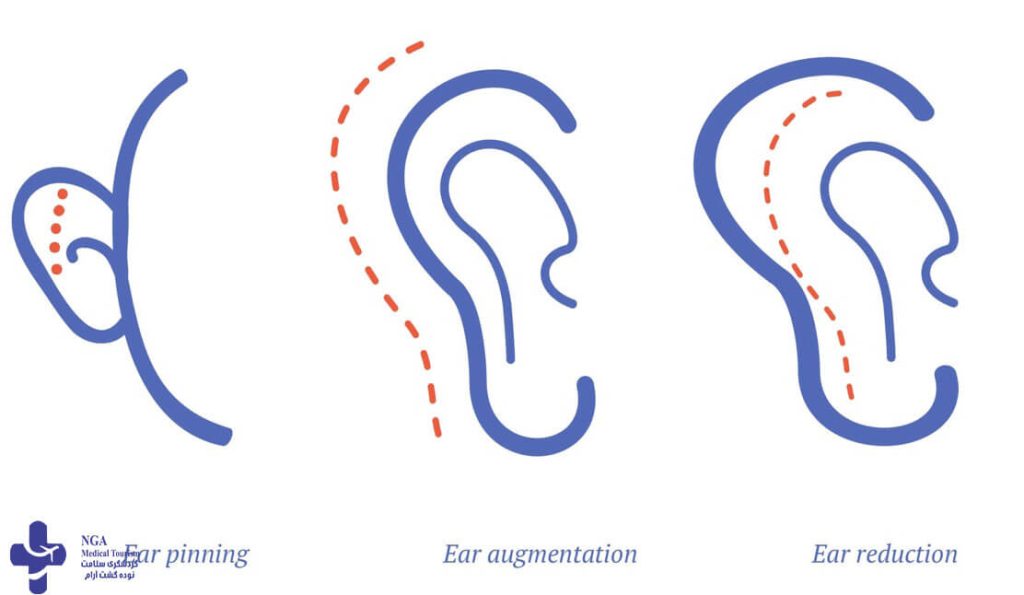
What are the reasons behind a prominent ear?
A prominent ear, also known as protruding ears, can have various underlying reasons. The following are some common factors that contribute to the prominence of ears:
Genetics: Prominent ears often have a genetic component. If one or both parents have prominent ears, there is a higher likelihood that their children may inherit this trait.
Lack of Ear Fold Development: The shape and position of the cartilage folds within the ear, particularly the antihelical fold, play a role in ear protrusion. When these folds do not develop properly, it can result in a more prominent ear appearance.
Weak Cartilage Support: In some cases, the cartilage that provides structural support to the ear is weak or underdeveloped. This can cause the ear to stick out more than desired.
Incomplete Conchal Bowl Formation: The conchal bowl, the concave portion of the ear located just inside the outer rim (helix), contributes to ear projection. If the conchal bowl does not form adequately, it can lead to prominent ears.
Injuries or Trauma: Trauma to the ear, such as an injury or accident, can result in the deformation of the ear cartilage, leading to a prominent ear appearance.
It’s important to note that having prominent ears does not typically indicate any underlying health issues.
Who is a good candidate for otoplasty?
What makes a good candidate for otoplasty?
A good candidate for otoplasty, or ear surgery, typically exhibits the following characteristics:
- Prominent or Protruding Ears: Individuals with ears that stick out excessively from the head and desire a more balanced and natural ear appearance are often suitable candidates for otoplasty.
- Physical Maturity: Otoplasty is commonly performed on children who are at least five or six years old, as their ears have typically reached near-full development. However, teenagers and adults of any age can also undergo otoplasty.
- Good Overall Health: Candidates for otoplasty should generally be in good physical health, free from any underlying medical conditions that may increase the risks associated with surgery or impede the healing process.
- Realistic Expectations: It is crucial for candidates to have realistic expectations about the outcomes of otoplasty. While the procedure can significantly improve the appearance of the ears, it is important to understand the limitations and potential risks involved.
- Emotional and Psychological Readiness: Otoplasty can have a positive impact on an individual’s self-esteem and confidence. Candidates should be emotionally and psychologically prepared for the surgery and have a genuine desire to undergo the procedure.
- Non-Smoker: Being a non-smoker or willing to quit smoking for a recommended period before and after the surgery is generally preferred, as smoking can interfere with the healing process.


Otoplasty surgical and nonsurgical techniques
Otoplasty, or ear surgery, can be performed using surgical and nonsurgical techniques, depending on the specific concerns and desired outcomes. Here’s an overview of both approaches:
Surgical Otoplasty:
Surgical otoplasty involves making incisions in the natural creases behind the ear or within the ear’s internal structures. The surgeon will then reshape the cartilage, reposition the ears, and secure them in a desired position using internal sutures. This can involve techniques such as cartilage scoring, cartilage reshaping, or earlobe reduction. Surgical otoplasty is typically performed under local or general anesthesia and requires a recovery period for healing.
Nonsurgical Otoplasty:
Nonsurgical otoplasty refers to non-invasive or minimally invasive techniques that can enhance the appearance of the ears without surgery. These techniques are often temporary and provide subtle changes. They may include:
- Ear Molding: Ear molding is a technique commonly used for infants with prominent ears. It involves applying gentle pressure and using customized splints or devices to mold the ear cartilage into a more desired shape. This approach is effective when started within a few weeks after birth.
- Dermal Fillers: Injectable dermal fillers can be used to correct minor asymmetries or add volume to certain areas of the ear. By strategically placing fillers, the appearance of ear shape and projection can be enhanced. The results are temporary and may last several months to a couple of years, depending on the type of filler used.
- Ear Accessories: Nonsurgical options such as ear prosthetics, ear molds, or specially designed ear jewelry can be used to create the illusion of reshaping or repositioning the ears. These options offer temporary aesthetic changes and can be easily removed or modified as desired.
Is otoplasty painful?
Otoplasty is performed under anesthesia, so you won’t feel pain during the surgery. However, some discomfort and soreness can be expected during the recovery period, which can be managed with pain medication.

Preparing for the operation
What should I do before ear correction surgery?
Before undergoing ear correction surgery, also known as otoplasty, it is important to follow these preparations:
– Consultation: Schedule a consultation with a qualified plastic surgeon specializing in otoplasty. Discuss your concerns, goals, and medical history. Understand the procedure, potential risks, and expected outcomes.
– Medical Evaluation: Your surgeon may require a pre-operative medical evaluation, including blood tests and a physical examination, to ensure you are in good health and fit for surgery.
– Medication and Supplements: Inform your surgeon about any medications, supplements, or herbal remedies you are currently taking, as they may interfere with the surgery or recovery process. Your surgeon may advise you to temporarily discontinue certain medications or supplements.
– Smoking and Alcohol: If you smoke, it is advisable to quit smoking or reduce it significantly before the surgery, as smoking can impair healing. Similarly, refrain from consuming alcohol for a specified period before the procedure, as it can increase bleeding risks and impact anesthesia.
– Lifestyle Adjustments: Make necessary arrangements for your recovery period, including time off from work or school, as well as assistance with daily activities during the initial healing phase.
– Pre-operative Instructions: Follow any specific pre-operative instructions provided by your surgeon, such as fasting requirements, avoiding certain skincare products, or showering before the surgery.
– Arrange Transportation: Plan for someone to drive you to and from the surgical facility on the day of the procedure, as you may be groggy from anesthesia and unable to drive.
– Post-operative Recovery Supplies: Prepare necessary supplies such as prescribed medications, ice packs, clean dressings, and comfortable clothing to aid in your recovery.
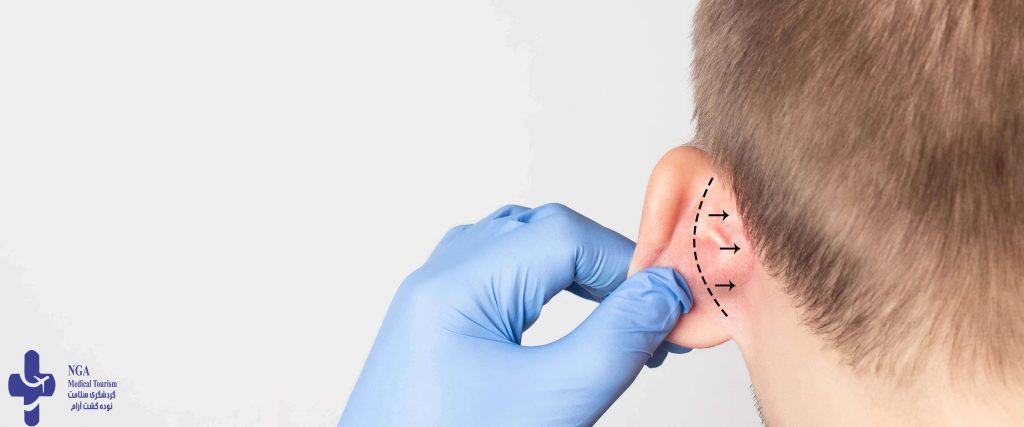
Ear Surgery (Otoplasty) Procedure
How is otoplasty surgery performed?
Ear surgery typically performed on an outpatient basis under local or general anesthesia. The specific details of the procedure will depend on the individual case, but here is a general overview of the otoplasty procedure:
– Anesthesia: The patient is given either local anesthesia with sedation or general anesthesia, depending on the extent of the surgery and the patient’s preference.
– Incision: The surgeon makes an incision behind the ear, in the natural fold where the ear meets the head.
– Reshaping the ear: The surgeon then reshapes the cartilage in the ear to create a more aesthetically pleasing contour. In cases where the ear is overly large, the surgeon may remove some cartilage.
– Suturing: The surgeon then sutures the cartilage in place to maintain the new shape and position of the ear.
– Closing the incision: The surgeon closes the incision with sutures, which may be removed after about a week.
– Dressing: A dressing is applied to the ear to protect it and hold it in place while it heals.
The entire procedure typically takes 1-2 hours, and most patients are able to go home the same day.

After otoplasty surgery
Otoplasty recovery and post-op instructions
After otoplasty surgery, it’s important to follow your surgeon’s post-operative instructions to ensure proper healing and minimize the risk of complications. Here are some general guidelines for what to expect after otoplasty:
– Pain and discomfort: You may experience some pain, discomfort, and swelling in the ears for the first few days after surgery. Your surgeon will likely prescribe pain medication to help manage any discomfort.
– Dressings and bandages: Your ears will be covered with a dressing or bandage for the first few days after surgery to protect them and help them heal. You may also need to wear a headband or bandage over your ears for several days or weeks after surgery to help maintain their new shape.
– Activity restrictions: You should avoid strenuous activities and exercise for at least a week after surgery. You should also avoid sleeping on your side or rubbing your ears for several weeks after surgery.
– Follow-up appointments: You will need to schedule follow-up appointments with your surgeon to monitor your healing and remove any sutures or dressings as needed.
– Results: It may take several weeks or even months for the final results of your otoplasty to become fully visible. Be patient and follow all post-operative instructions provided by your surgeon to ensure the best possible outcome.
– Complications: While otoplasty is generally a safe and effective procedure, there is always a risk of complications such as infection, bleeding, or poor wound healing. Contact your surgeon if you experience any unusual symptoms such as excessive pain, bleeding, or signs of infection such as fever or redness.
Otoplasty risks and benefits
Like any surgical procedure, otoplasty (ear surgery) comes with both benefits and risks. Here are some of the potential benefits and risks of otoplasty:
Benefits:
Improved appearance: Otoplasty can improve the appearance of prominent or asymmetrical ears, helping to boost self-esteem and confidence.
Correction of deformities: Otoplasty can also correct a variety of ear deformities, such as ears that are too large or too small.
Improved hearing: In some cases, otoplasty can correct structural problems in the ear that cause hearing difficulties.
ong-lasting results: The results of otoplasty are usually permanent, which means that patients can enjoy the benefits of the procedure for many years.
Minimal scarring: The incision made during otoplasty is typically made behind the ear, which means that any scarring should be minimal and easily hidden.


Risks:
Infection: Like any surgical procedure, otoplasty carries a risk of infection.
Bleeding: There is a risk of bleeding during or after the procedure.
Poor wound healing: In some cases, the incision site may not heal properly, which can result in scarring or other complications.
Anesthesia risks: The use of anesthesia carries its own set of risks, including allergic reactions and other complications.
Unsatisfactory results: While otoplasty can be highly effective, there is always a risk that the results may not meet the patient’s expectations.
Cost of otoplasty in Iran
ear plastic surgery cost
The cost of otoplasty (ear surgery) in Iran can vary depending on several factors, including the specific procedure being performed, the surgeon’s experience and expertise, and the location of the clinic or hospital where the surgery is being performed. Generally speaking, the cost of otoplasty in Iran is lower than in many other countries, making it a popular destination for medical tourism.
In Iran, the cost of otoplasty can range from approximately 30 to 70 million Iranian Rials (IRR), which is equivalent to approximately 1,250 to 2,900 US dollars (USD), depending on the factors mentioned above.
Ear Surgery Results in Iran
cosmetic ear surgery
There are several good points to consider when it comes to ear surgery results in Iran:
- Highly skilled surgeons: Iran has a reputation for having highly skilled and experienced plastic surgeons who have undergone extensive training and education. Many Iranian surgeons are board-certified and have received advanced training in otoplasty techniques.
- Advanced technology: Iranian clinics and hospitals are equipped with state-of-the-art technology and equipment, which can help improve the accuracy and effectiveness of otoplasty procedures.
- Affordable prices: The cost of otoplasty in Iran is generally lower than in many other countries, making it a popular destination for medical tourism. This can make the procedure more accessible to patients who may not be able to afford it in their home countries.
- High patient satisfaction rates: Many patients who undergo otoplasty in Iran report high levels of satisfaction with their results. Iranian surgeons are known for their attention to detail and ability to achieve natural-looking results.
- Cultural sensitivity: Iranian healthcare providers are known
before and after Ear Surgery:
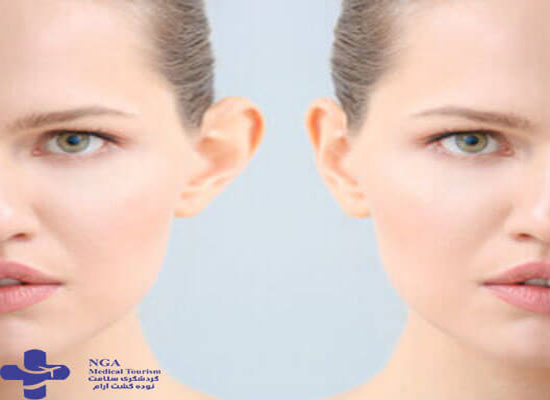


Why Nodeh Gasht Aram?
Nodeh Gasht Aram is a medical tourism facilitator based in Iran that specializes in helping foreign patients access high-quality medical care in Iran. There are several reasons why foreign patients choose to work with Nodeh Gasht Aram:
– Expertise and experience
– Personalized service
– Access to top-quality providers
– Cost savings
Overall, Nodeh Gasht Aram can help foreign patients access high-quality otoplasty care in Iran with ease and confidence. With their expertise, experience, and commitment to patient satisfaction, they can help patients achieve the best possible results from their otoplasty procedure.
conclusion:
Ear cosmetic surgery, also known as otoplasty, offers promising results for individuals seeking to enhance the appearance of their ears. This procedure can address a variety of concerns, such as protruding or asymmetrical ears, earlobe deformities, or the effects of aging. With skilled surgeons and advanced techniques, otoplasty provides a safe and effective solution, boosting self-confidence and restoring balance to facial aesthetics.
Frequently Asked Questions About Otoplasty
No, otoplasty, also known as ear reshaping surgery, is primarily performed to correct prominent or protruding ears by repositioning them closer to the head. It focuses on improving the shape and position of the ears rather than making them smaller. If reducing the size of the ears is the desired outcome, a different surgical procedure may be necessary.
Otoplasty can be a permanent procedure, but it can also be revised or reversed. If a patient is dissatisfied with the results of their otoplasty, a revision surgery can be performed to address their concerns or restore the original appearance of the ears. However, it’s important to consult with a qualified plastic surgeon to discuss individual circumstances and the potential for revision or reversal.
Otoplasty can provide long-lasting results, but it is not necessarily permanent. The outcomes of otoplasty can be influenced by various factors, including the individual’s healing process and the natural aging process, which may lead to changes in the appearance of the ears over time.
No, otoplasty does not affect hearing as it primarily focuses on reshaping the external structures of the ear for cosmetic purposes.
Otoplasty can leave small scars behind the ears, but they are usually well-hidden and fade over time. The visibility of scars depends on individual healing and surgical techniques used.
Yes, it is possible to have otoplasty (ear reshaping surgery) more than once. If a person is not satisfied with the results of their initial otoplasty or if new issues arise, a second or revision otoplasty can be performed. However, it is crucial to consult with a qualified plastic surgeon who can assess the individual’s specific situation and determine the feasibility and appropriate approach for a second procedure.
During otoplasty surgery, local anesthesia is typically used to numb the area, minimizing pain. Post-operative discomfort can be managed with pain medication, but individual pain tolerance may vary.
Otoplasty is generally considered a safe procedure when performed by a qualified and experienced surgeon. As with any surgery, there are potential risks and complications, but they are typically rare and can be minimized through proper pre-operative evaluation and post-operative care.
The decision of whether otoplasty is worth it depends on an individual’s personal concerns and goals regarding the appearance of their ears. It can provide improved self-confidence and satisfaction for those seeking to correct ear shape or protrusion.
Otoplasty is typically performed by a plastic surgeon or an ear, nose, and throat (ENT) surgeon with specialized training and expertise in cosmetic ear surgery. It is important to choose a qualified and experienced surgeon for the best results.


